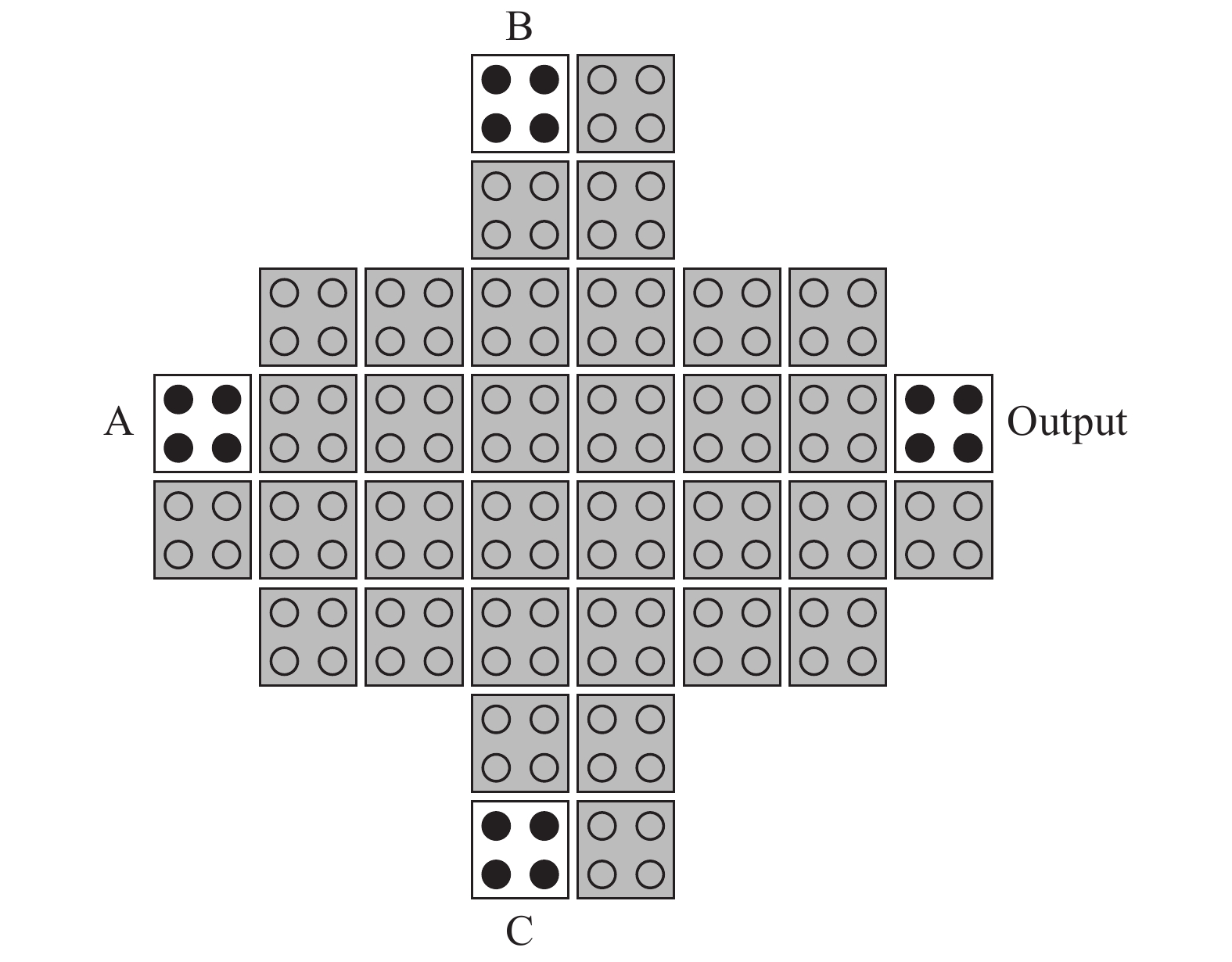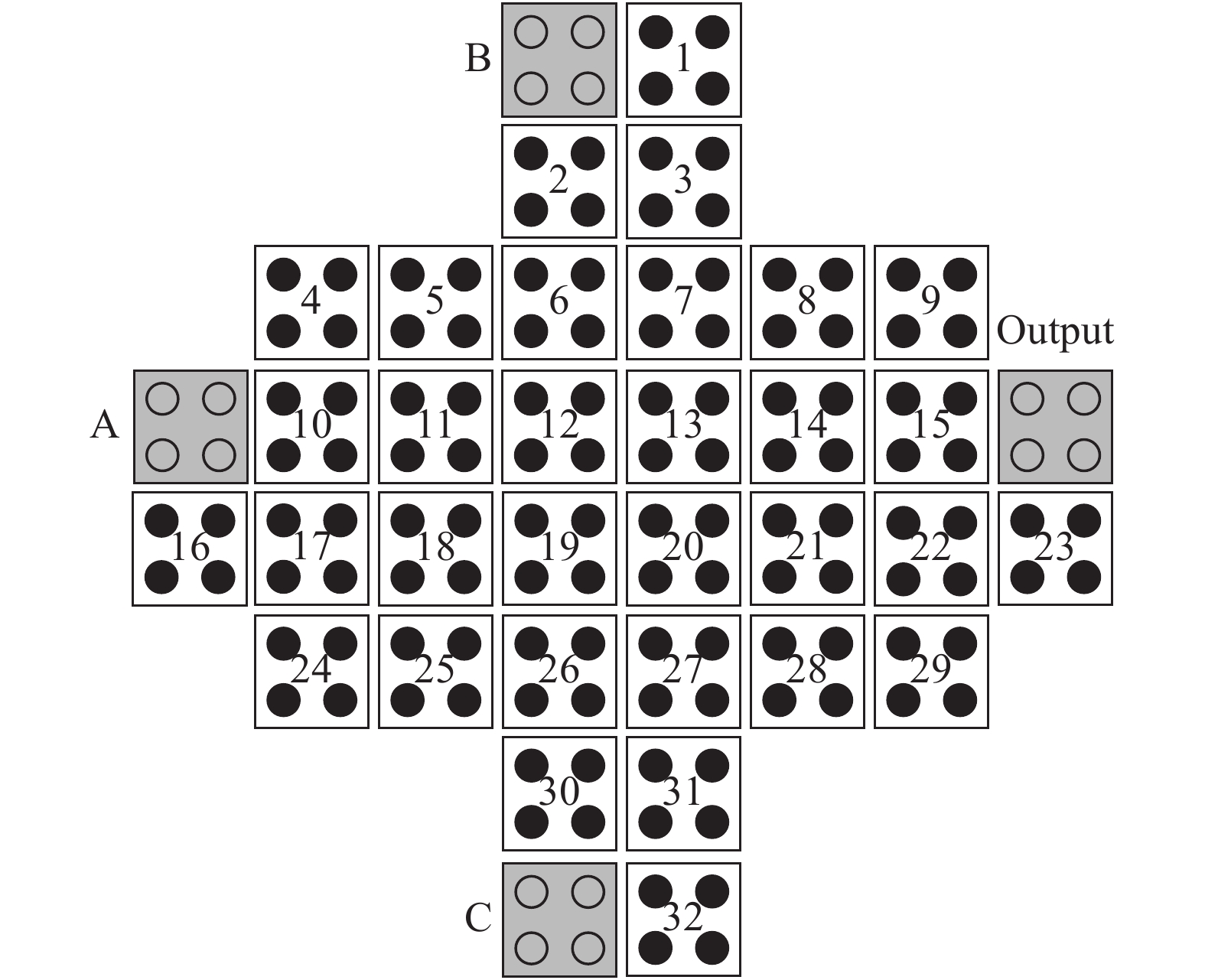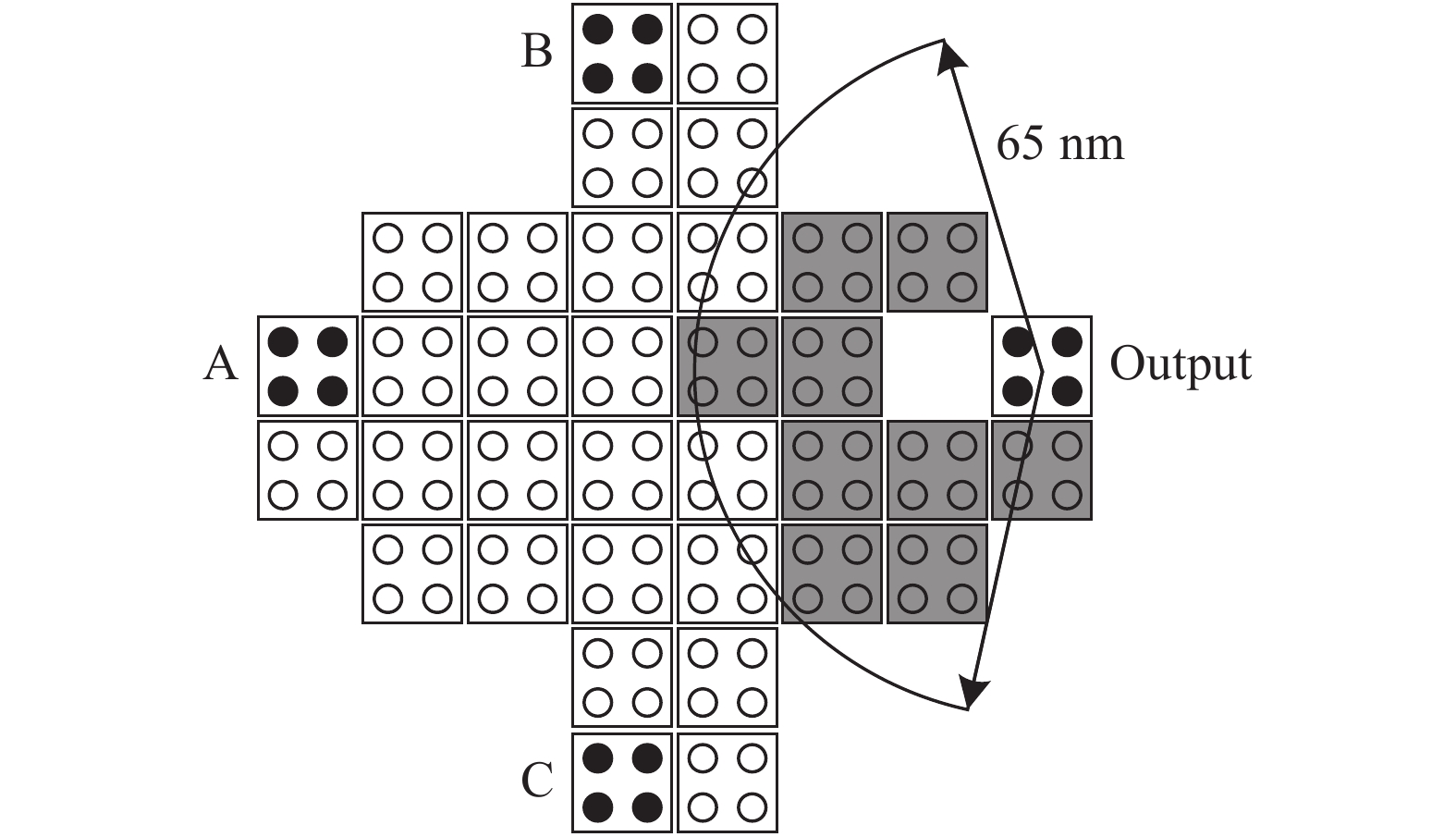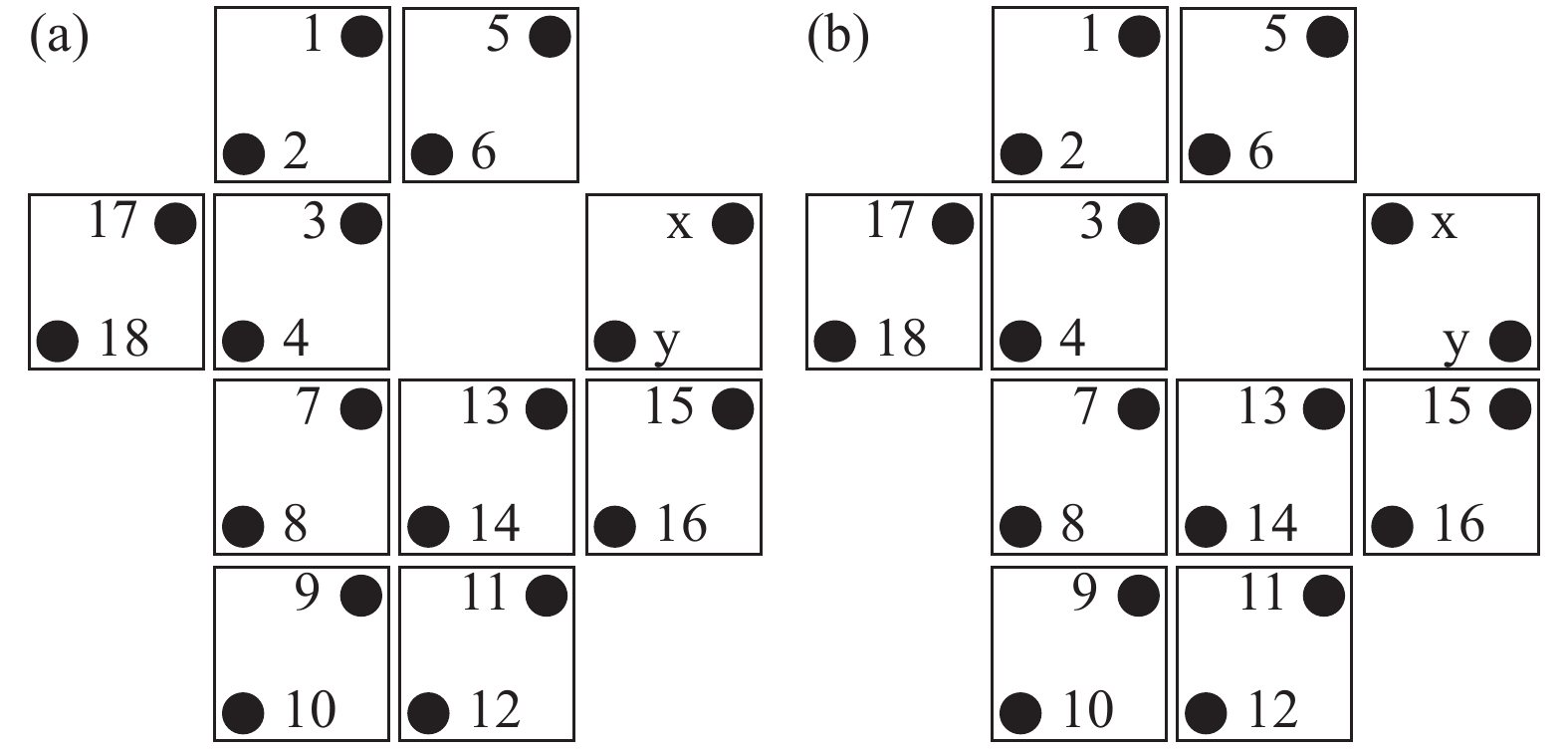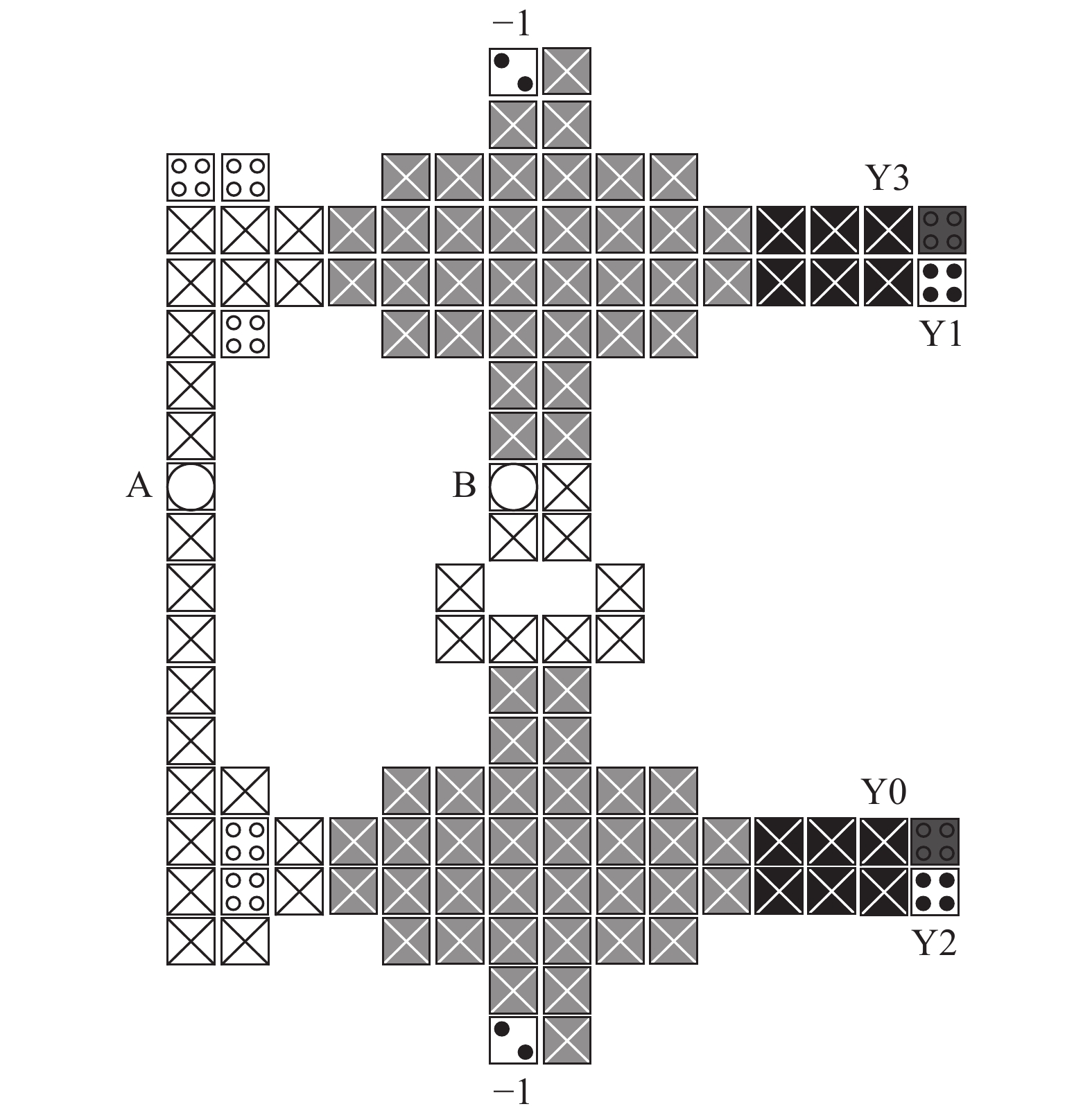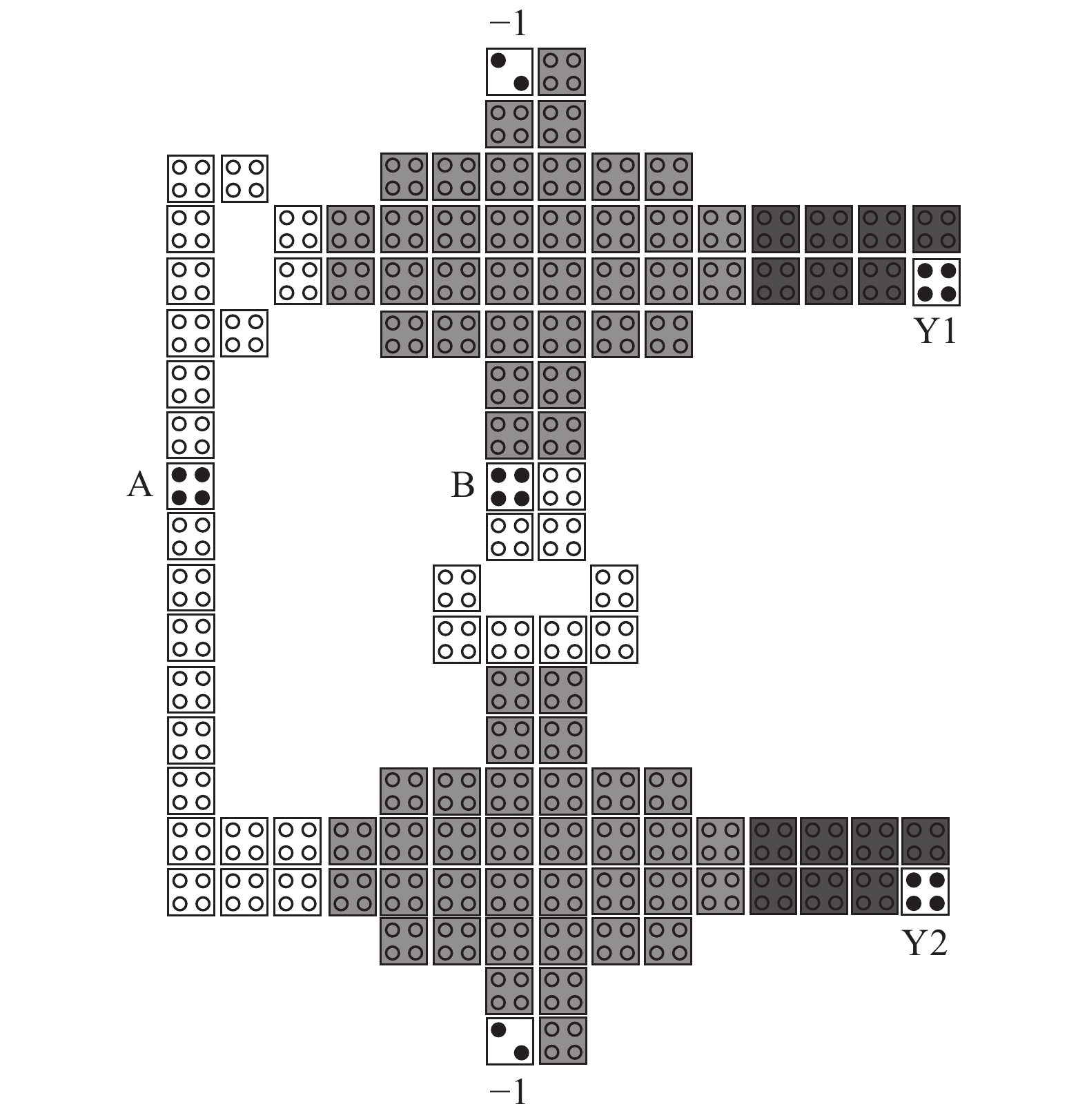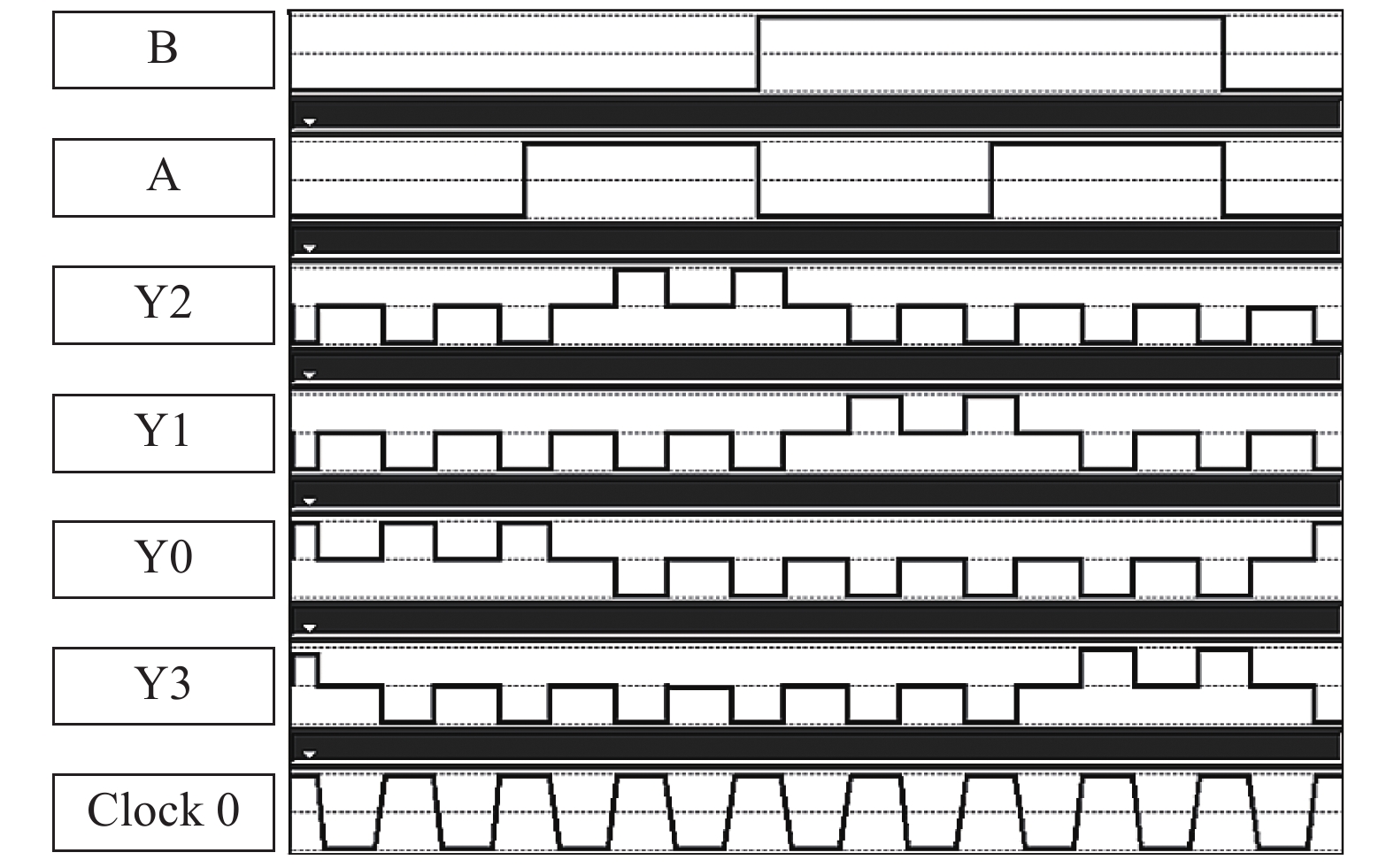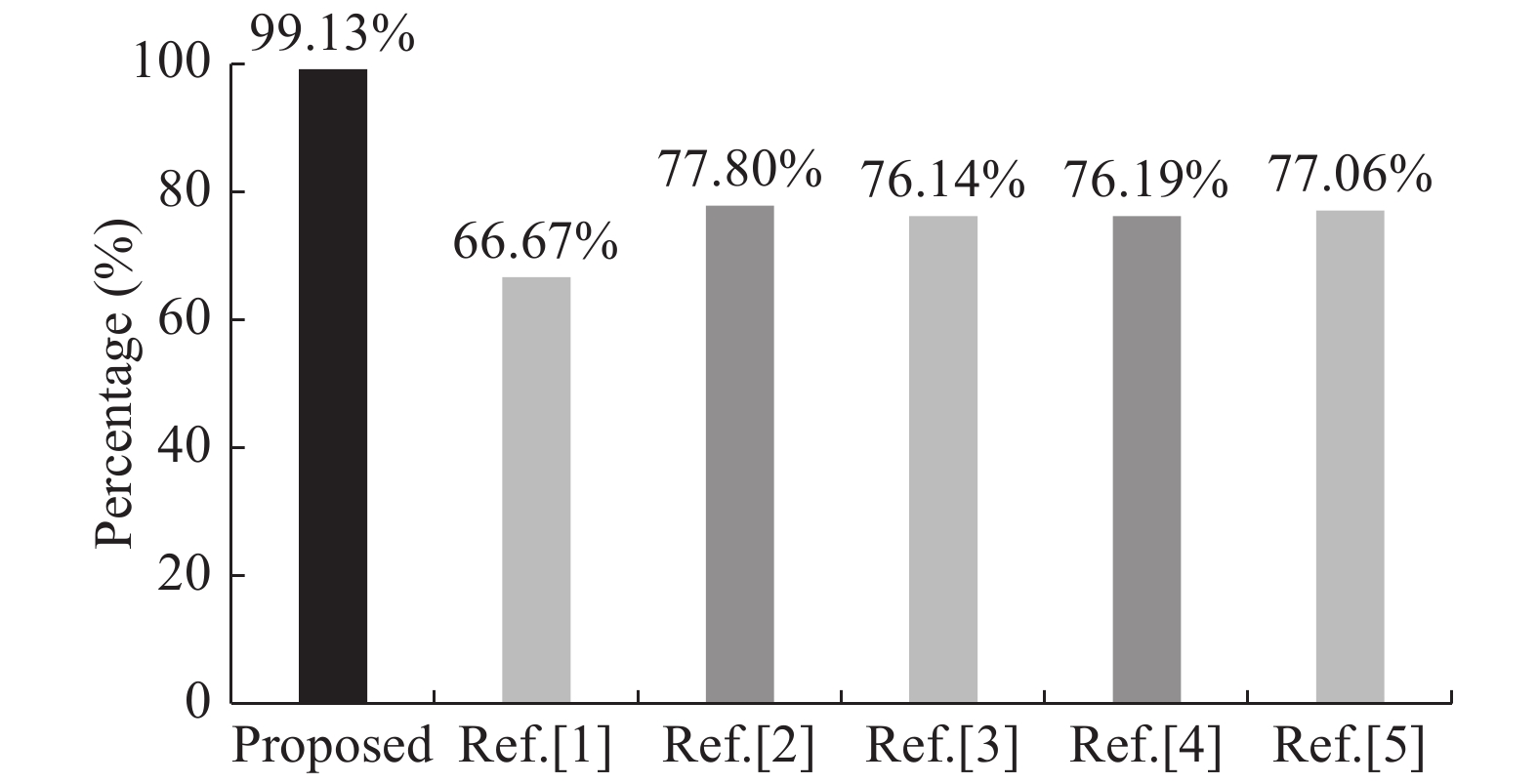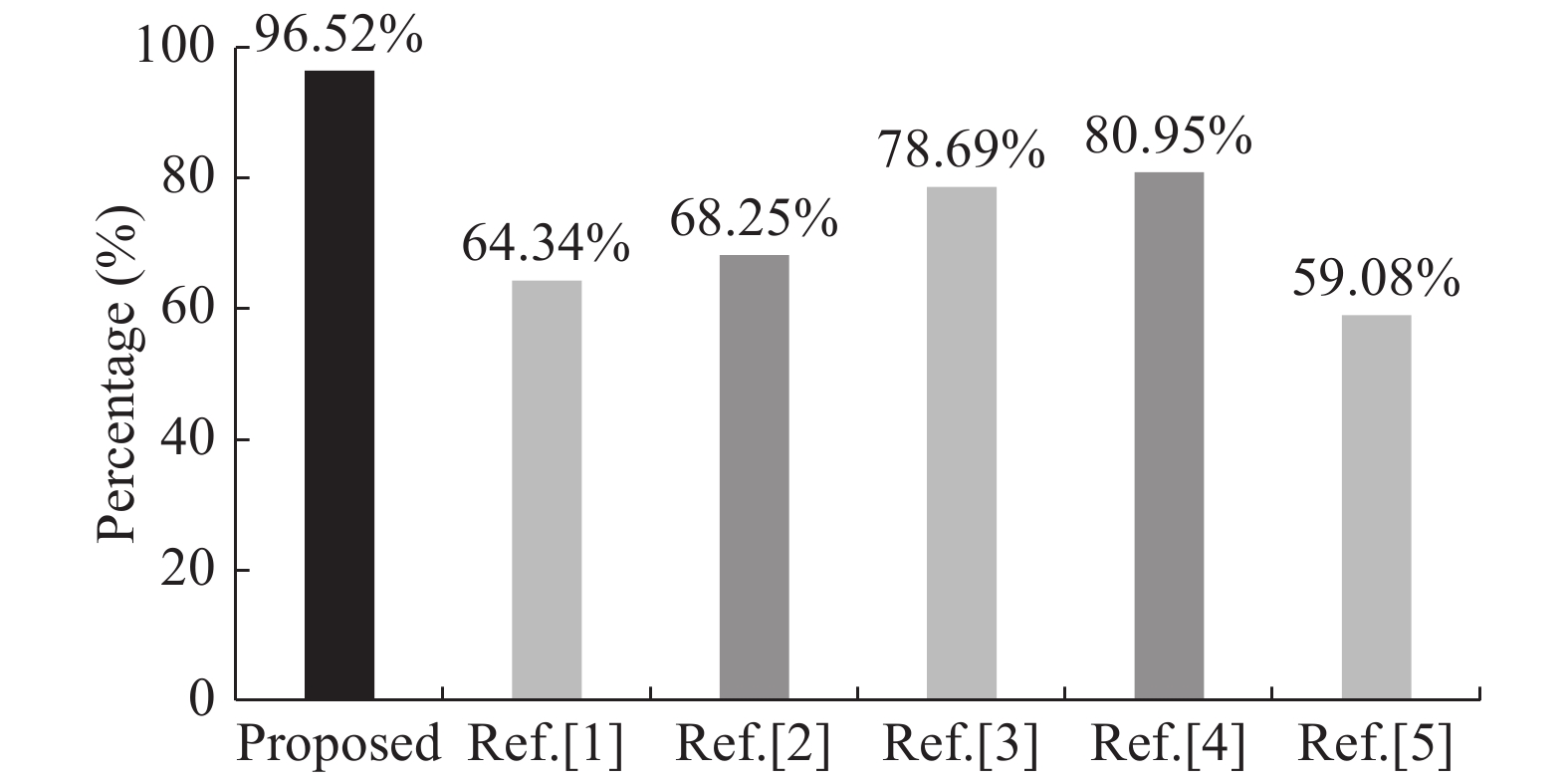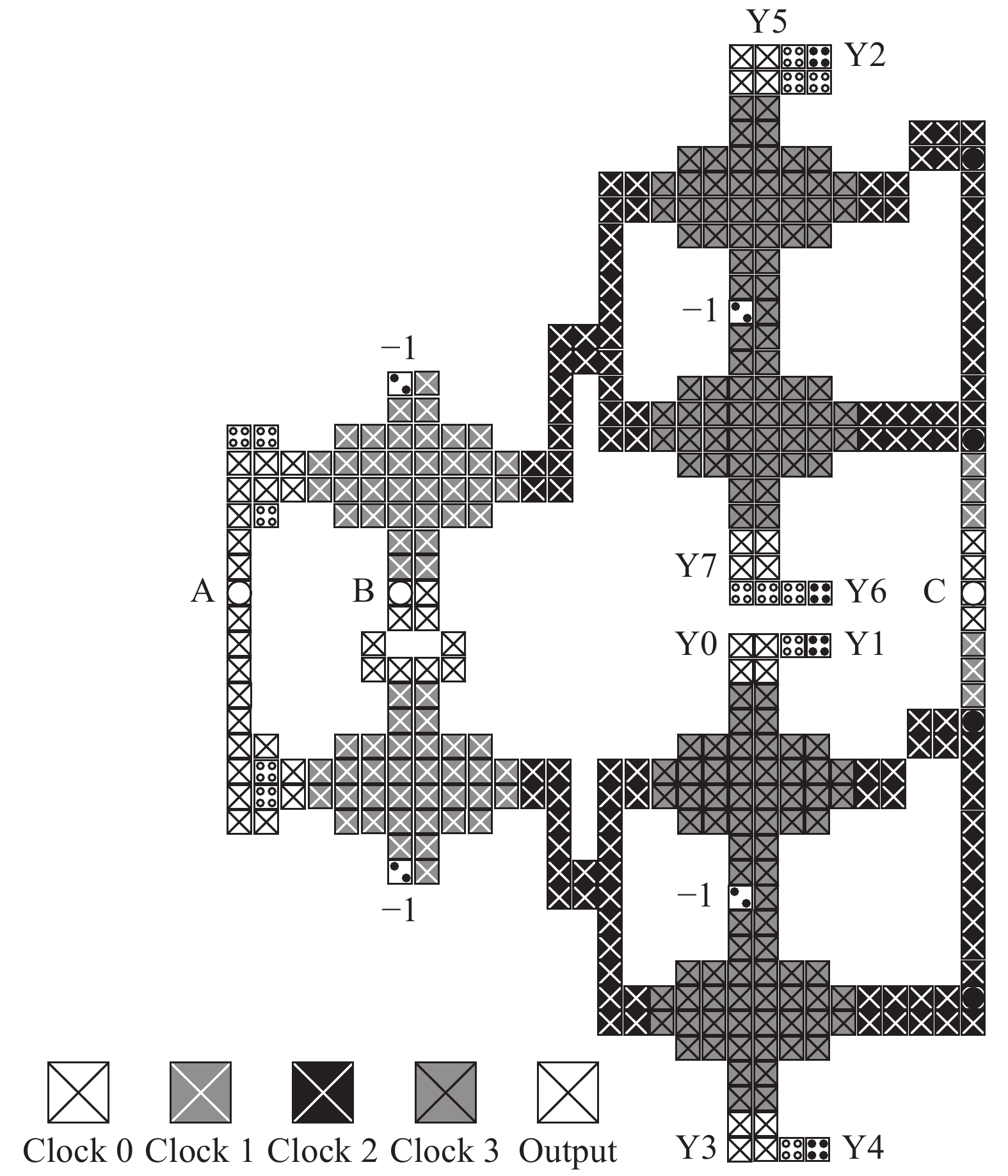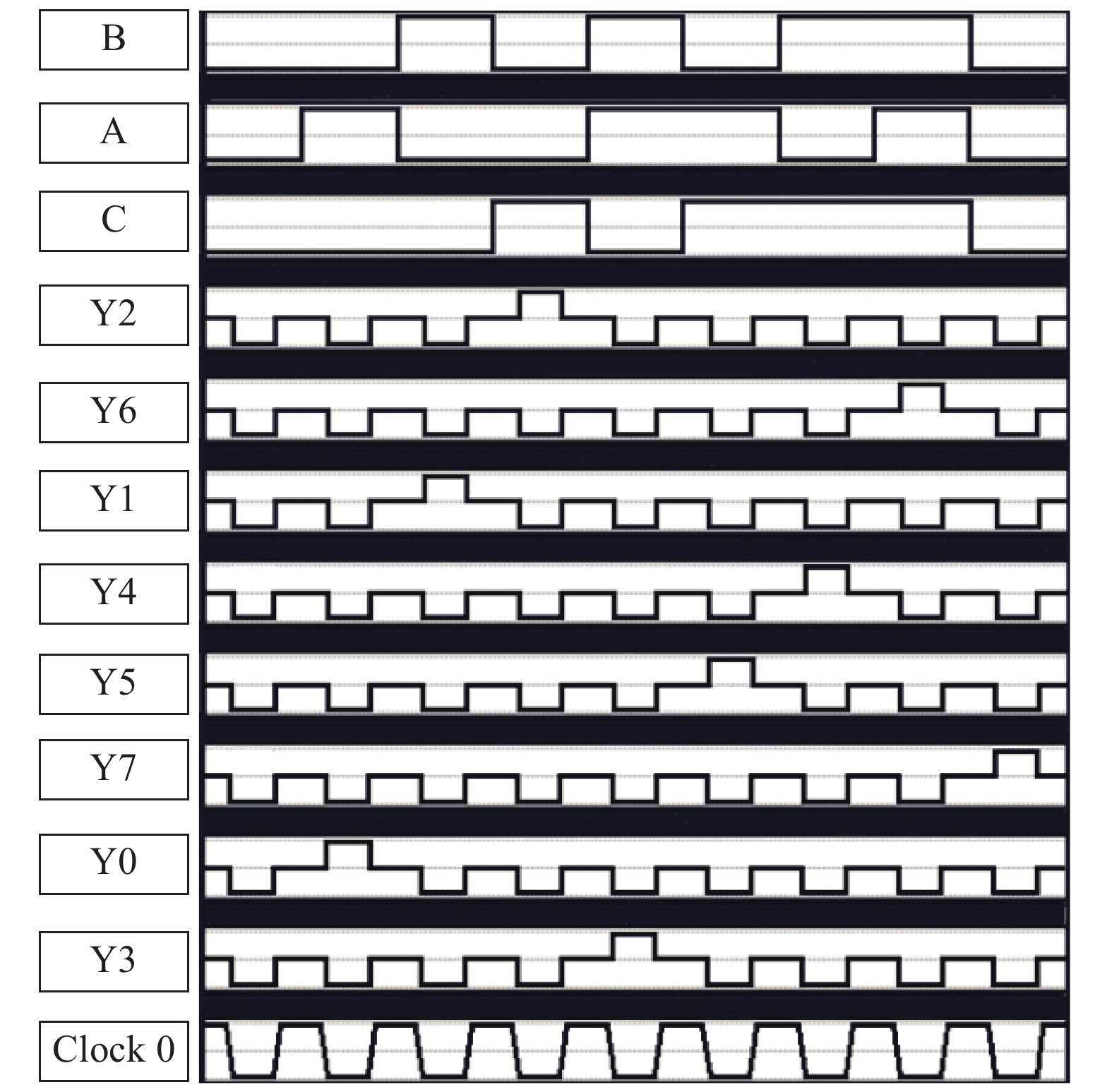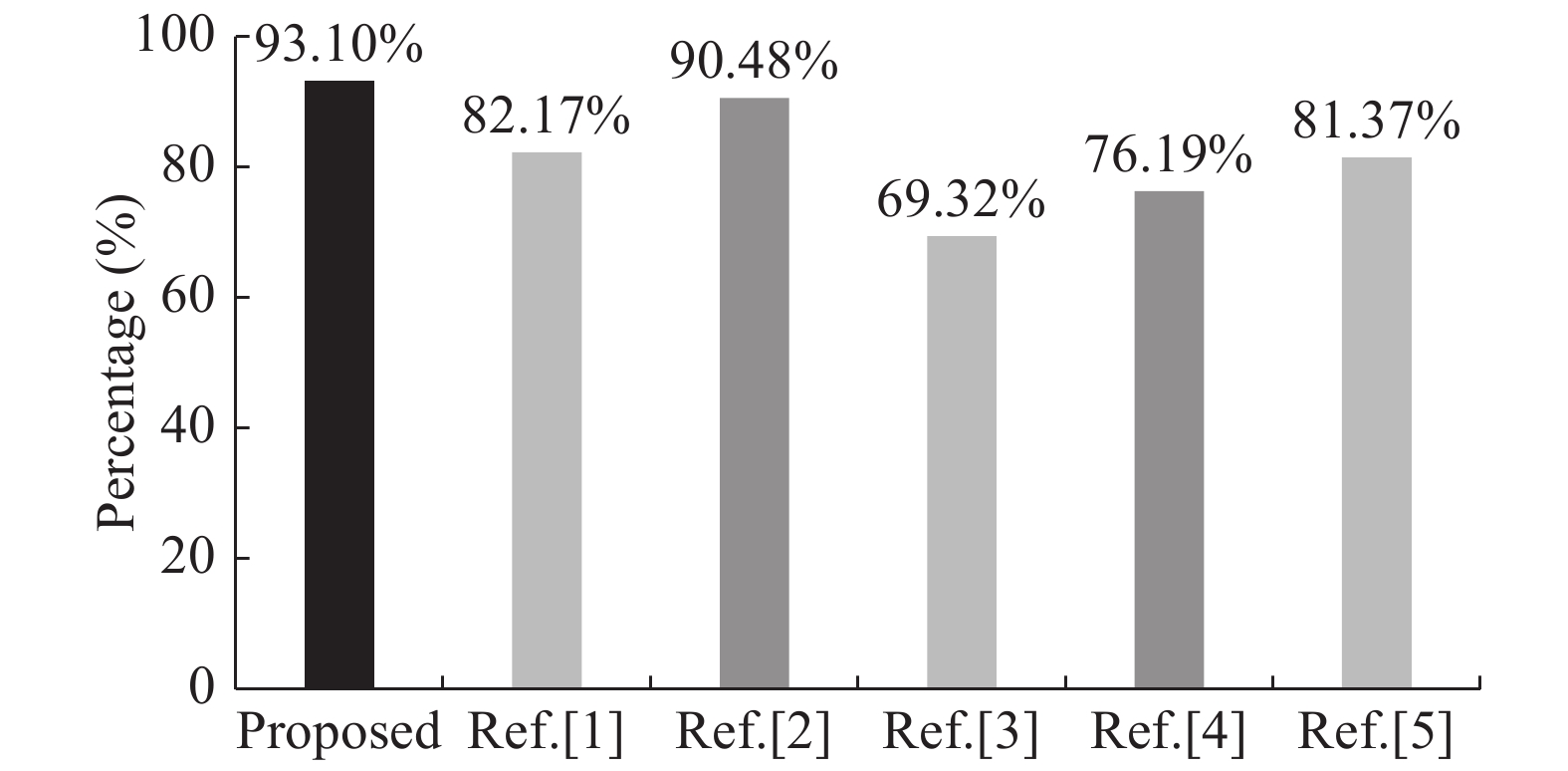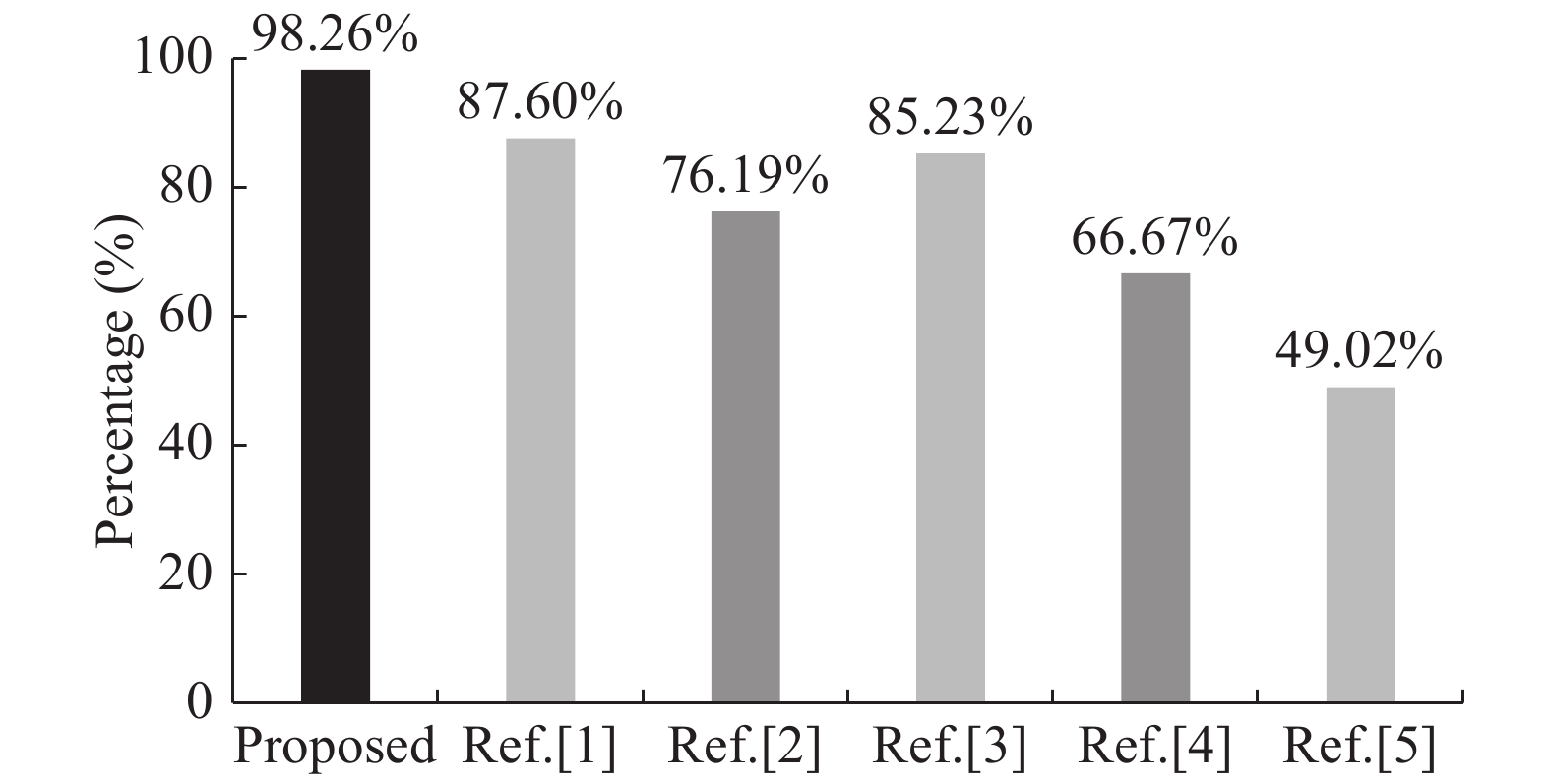| Citation: |
Xiaoyang Wang, Guangjun Xie, Feifei Deng, Yu Quan, Hongjun Lü. Design and comparison of new fault-tolerant majority gate based on quantum-dot cellular automata[J]. Journal of Semiconductors, 2018, 39(8): 085001. doi: 10.1088/1674-4926/39/8/085001
****
X Y Wang, G J Xie, F F Deng, Y Quan, H Lü, Design and comparison of new fault-tolerant majority gate based on quantum-dot cellular automata[J]. J. Semicond., 2018, 39(8): 085001. doi: 10.1088/1674-4926/39/8/085001.
|
Design and comparison of new fault-tolerant majority gate based on quantum-dot cellular automata
DOI: 10.1088/1674-4926/39/8/085001
More Information
-
Abstract
Quantum-dot cellular automata (QCA) is increasingly valued by researchers because of its nanoscale size and very low power consumption. However, in the manufacture of nanoscale devices prone to various forms of defects, which will affect the subsequent circuits design. Therefore, fault-tolerant QCA architectures have become a new research direction. The purpose of this paper is to build a novel fault-tolerant three-input majority gate based on normal cells. Compared with the previous structures, the majority gate shows high fault tolerance under single-cell and double-cell omission defects. In order to examine the functionality of the proposed structure, some physical proofs under single cell missing defects are provided. Besides, two new fault-tolerant decoders are constructed based on the proposed majority gate. In order to fully demonstrate the performance of the proposed decoder, the previous decoders were thoroughly compared in terms of fault tolerance, area and delay. The result shows that the proposed design has a good fault tolerance characteristic, while the performance in other aspects is also quite good. -
References
[1] Lent C S, Tougaw P D, Porod W, et al. Quantum-dot cellular automata. Nanotechnology, 1993, 4(1): 49 doi: 10.1088/0957-4484/4/1/004[2] Sen B, Sahu Y, Mukherjee R, et al. On the reliability of majority logic structure in quantum-dot cellular automata. Microelectron J, 2016, 47: 7 doi: 10.1016/j.mejo.2015.11.002[3] Tougaw P D, Lent C S. Logical devices implemented using quantum cellular automata. J Appl Phys, 1994, 75(3): 1818 doi: 10.1063/1.356375[4] Lent C S, Tougaw P D. A device architecture for computing with quantum dots. Proc IEEE, 1997, 85(4): 541 doi: 10.1109/5.573740[5] Sen B, Dutta M, Mukherjee R, et al. Towards the design of hybrid QCA tiles targeting high fault tolerance. J Comput Electron, 2015, 15: 429[6] Momenzadeh M, Ottavi M, Lombardi F. Modeling QCA defects at molecular-level in combinational circuits. IEEE International Symposium on Defect and Fault Tolerance in VLSI Systems, 2005: 208[7] Tougaw P D, Lent C S. Dynamic behavior of quantum cellular automata. J Appl Phys, 1996, 80(8): 4722 doi: 10.1063/1.363455[8] Huang J, Momenzadeh M, Lombardi F. Defect tolerance of QCA tiles. Proceedings of the Design Automation and Test in Europe Conference, 2006, 1: 1[9] Wei T, Wu K, Karri R, et al. Fault tolerant quantum cellular array (QCA) design using triple modular redundancy with shifted operands. Proceedings of the ASP-DAC, Asia and South Pacific Design Automation Conference, 2005, 2: 1192[10] Farazkish R. A new quantum-dot cellular automata fault-tolerant full-adder. J Comput Electron, 2015, 14(2): 506 doi: 10.1007/s10825-015-0668-2[11] Huang J, Momenzadeh M, Lombardi F. On the tolerance to manufacturing defects in molecular QCA tiles for processing-by-wire. J Electron Test, 2006, 23(2): 163[12] Du H K, Lv H J, Zhong Y Q, et al. Design and analysis of new fault-tolerant majority gate for quantum-dot cellular automata. J Comput Electron, 2016, 15: 1484 doi: 10.1007/s10825-016-0918-y[13] Kumar D, Mitra D. Design of a practical fault-tolerant adder in QCA. Microelectron J, 2016, 53: 90 doi: 10.1016/j.mejo.2016.04.004[14] Farazkish R. A new quantum-dot cellular automata fault-tolerant five-input majority gate. J Nanopart Res, 2014, 16(2): 2259 doi: 10.1007/s11051-014-2259-8[15] Farazkish R, Navi K. New efficient five-input majority gate for quantum-dot cellular automata. J Nanopart Res, 2012, 14(11): 1252 doi: 10.1007/s11051-012-1252-3[16] Roohi A, Khademolhosseini H, Sayedsalehi S, et al. A novel architecture for quantum-dot cellular automata multiplexer. International Journal of Computer Science Issues, 2011, 8(6): 55[17] Zhou R, Xia X, Wang F, et al. A logic circuit design of 2-4 decoder using quantum cellular automata. J Comput Inform Syst, 2012, 8: 3463[18] Banerjee S, Bhattacharya J, Chatterjee R, et al. A novel design of 3 input 8 output decoder using quantum dot cellular automata. IEEE Information Technology, Electronics and Mobile Communication Conference, 2016: 1[19] Kianpour M, Sabbaghi-Nadooshan R. A novel modular decoder implementation in quantum-dot cellular automata. International Conference on Nanoscience, Technology and Societal Implications, 2011: 1[20] De D, Purkayastha T, Chattopadhyay T. Design of QCA based programmable logic array using decoder. Microelectron J, 2016, 55: 92 doi: 10.1016/j.mejo.2016.06.005[21] Makanda K, Jeon J C. Improvement of quantum-dot cellular automata decoder using inverter chain. International Conference on Control and Automation, 2013: 227 -
Proportional views






 DownLoad:
DownLoad:

